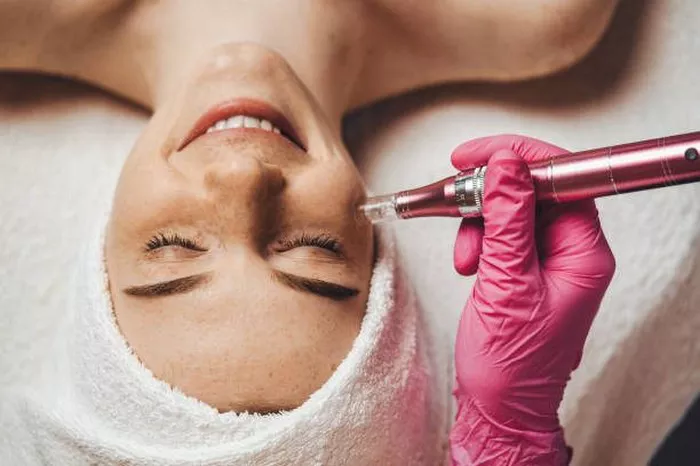Dermablading, also known as dermaplaning, is a popular cosmetic procedure that involves the gentle exfoliation of the skin’s surface using a specialized scalpel-like instrument. It is primarily sought after for its ability to remove dead skin cells, improve skin texture, and promote a smoother complexion. However, a common concern among those considering dermaplaning is whether it makes facial hair grow back thicker or darker. In this article, we will delve into the science behind dermaplaning, dispel common myths, and provide insights into what you can expect from this procedure in terms of hair regrowth.
Understanding Dermablading
Dermablading is a non-invasive exfoliation technique that is typically performed by licensed estheticians or dermatologists. During the procedure, a sterile blade, similar in appearance to a scalpel but with a rounded edge, is used to gently scrape the surface of the skin. This process effectively removes the top layer of dead skin cells and fine vellus hair, often referred to as “peach fuzz.” The result is a smoother, more radiant complexion.
Common Myths About Dermaplaning
Before addressing the question of whether dermaplaning makes hair grow back thicker, it’s essential to dispel some common misconceptions:
Myth 1: Hair Grows Back Thicker: One prevalent myth is that dermaplaning causes hair to grow back thicker and darker. This belief likely stems from the misconception that shaving, a similar process, has this effect. However, the two processes are distinct in their impact on hair growth.
Myth 2: Permanent Hair Removal: Dermablading is not a method for permanent hair removal. It targets only the fine, superficial hair on the face, and regrowth is expected over time.
Myth 3: Stimulated Hair Growth: Some individuals worry that dermaplaning may stimulate increased hair growth due to the exfoliation process. This is another misconception that we will explore further in this article.
The Science Behind Hair Regrowth
To understand how dermaplaning affects hair regrowth, it’s essential to grasp the science of hair growth and the different types of hair on the human body.
Vellus Hair: Vellus hair is the fine, short, and often colorless or lightly pigmented hair found on areas of the body, including the face. It is typically less noticeable than terminal hair, which is thicker, coarser, and darker.
Terminal Hair: Terminal hair, found on the scalp, eyebrows, and certain body parts, is characterized by its thickness and pigmentation. It differs significantly from vellus hair in terms of texture and appearance.
The vellus hair on the face, commonly referred to as “peach fuzz,” is the type of hair that dermaplaning targets. This hair is already fine and light in color, and dermaplaning removes it at the surface level.
Does Dermaplaning Make Hair Grow Back Thicker?
The straightforward answer is no, dermaplaning does not make facial hair grow back thicker or darker. This is a common misconception and a persistent myth surrounding the procedure.
Here’s why:
No Change to Hair Follicles: Dermaplaning is an epidermal procedure, meaning it targets the top layer of the skin. It does not affect the hair follicles, which are located deeper in the dermis. Hair thickness and color are determined by the hair follicle, not the skin’s surface.
Misinterpretation of Regrowth: After dermaplaning, as vellus hair naturally regrows over time, some individuals may perceive it as thicker or darker than before. In reality, the hair regrowth remains vellus hair and is not altered by the procedure.
Ongoing Maintenance: Dermaplaning is not a one-time solution for hair removal. Since it does not permanently remove hair, individuals interested in maintaining a hair-free appearance will need regular dermaplaning sessions as part of their skincare routine.
Conclusion
Dermablading, or dermaplaning, is a safe and effective cosmetic procedure primarily intended for exfoliating the skin’s surface and removing fine vellus hair. Contrary to a common myth, dermaplaning does not make facial hair grow back thicker or darker. The procedure does not alter hair follicles or stimulate changes in hair texture or pigmentation. Instead, it offers a non-invasive way to achieve a smoother complexion and improve the overall appearance of the skin. If you’re considering dermaplaning as part of your skincare routine, you can do so with confidence, knowing that it will not impact the thickness or color of your facial hair.


